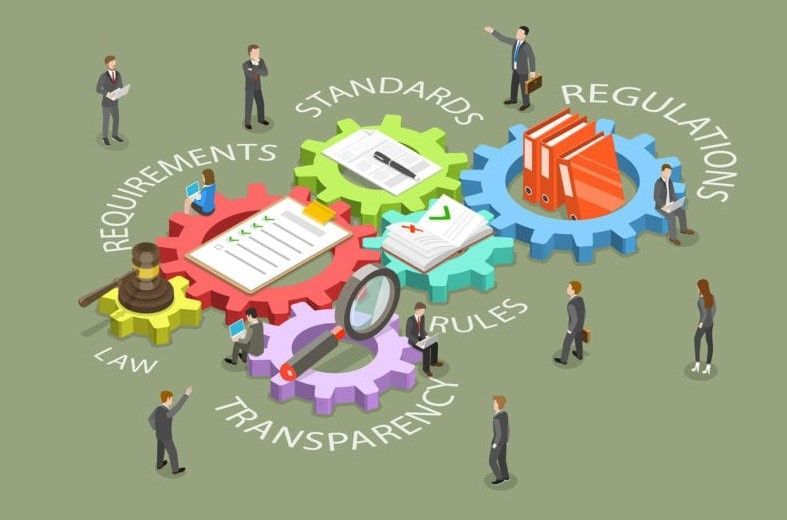Is Your Business ‘Owner-Proof’?
August 14, 2025
What do we mean by “owner-proofing”? Simply put, we mean building yourself a business that will run nearly as well, or better, without you. In other words, build a “company,” not a “practice.”
Here’s an example of an owner who, with our help, solved his owner-proofing problem before it was too late and went on to build the value of the company in the right way.
On the first day of our consultative sales training course, FOCIS®, the owner informed us that his company had only one client, only a few projects with that client, and only two to three months left on the biggest contract with that client. Except for one high-potential, Fortune 100 prospect, the pipeline was virtually dry . . . and the founder was the only salesperson.
Talk about high risk. Because of the urgency and as part of the FOCIS® training, we coached the founder before and after every meeting with the major prospect. The good news is that our client got a seven-figure assignment. Even better news is that because of FOCIS® our client developed a customized sales process, enabling his company to acquire several clients and boost the company’s value far beyond what the balance sheet shows. In addition, risk has fallen in several areas: Customer concentration is down, the number of employees bringing in business is up, and the concentration of knowledge (mostly in the founder) has been eased.
This owner has owner-proofed his business against himself and increased its value.
A business owner might like to know how much his company is worth for a number of reasons, usually because he’s thinking of selling it. We’re not valuation experts but we are frequently asked to offer a point of view, and we’ve seen some common elements.
First, most business owners don’t start thinking about how the market will value their company early enough. Not even close. We’re talking years here. Second, depending on how involved in the business the owners are, they may not realize that they are the business-in other words, without their active involvement there is no business. The number of interested buyers can become severely limited.
Several elements can contribute , one of which is the creation, ongoing improvement, and execution of the key processes that make a specific business successful- your business. The importance of process may seem obvious for functions like accounting and manufacturing but not so obvious for others. Take marketing and sales.
In marketing, for instance, we sometimes find that the process is more focused on clearing internal hurdles, such as getting all the right approvals, than getting noticed by prospects.
In sales , a surprisingly common stumbling block is the lack of a formal, customized sales process. Even some successful companies “hire and hope” in sales. New and veteran salespeople are allowed to develop personal procedures and strategies. The sales process develops by accident, not design.
Some sales and marketing factors that build value are obvious: current sales, sales growth, margins, marketing investment, name recognition, customer retention rate, and market perception of quality.
Others are more subtle and revolve around risk.
- Product concentration: Just a few products-maybe even one-bring in most of the revenue
- Sales person concentration: One or two salespeople are highly productive and others are barely average.
- Channel concentration: Going to market is limited largely to one channel
- Too much reliance on the founder, owner, or CEO to bring in business
- The absence of a documented sales process that can be shared internally and with distributors, integrators, and independent reps.
- Knowledge concentrations: Too few people know the customers or the market well enough to generate revenue
- A weak or non-existent process to generate leads: The founder’s contacts and visibility in the industry generate all the leads
- No true differentiation that the market values . . . or
- The inability of the sales force to communicate that value and get paid for it.
How can you “owner-proof” against these factors? There are some hints above. Here is a proven fundamental that always works: Develop, follow, and enforce, if necessary, key business development processes.
Regular readers of this column won’t be surprised that our first recommendation is to develop a professional, customized sales process and upgrade the consultative selling skills of your business developers. Process is a key word here but so is customized – for your company, for your industry, even for individual salespeople.
How can you reduce risk and build value with a customized sales process?
Companies in which one or two key executives bring in all or nearly all of the business-usually the owner or CEO-are at significant risk. Such a business is not “owner-proof” because its success is entirely dependent on the owner- his industry experience, his expertise, his contacts, his passion for the company. A customized sales process that can be communicated to and implemented by a diverse sales team is much less risky. Such a process enables an owner to hire and train salespeople cost effectively and to distribute the income-generating responsibility.
Then, when it comes time to pass the baton to others in the company-or to sell the company-a customized sales process is invaluable because it’s a roadmap to generating revenue. It’s a proven way to sell even without all of the advantages the owner might have in the marketplace. Plus:
- With a customized sales process, sales won’t be concentrated in a small number of sales representatives. Sharing the process enables others to sell effectively, too. New salespeople get up to speed much faster.
- As the sales process expands to a broader range of company services and products, cross-selling is easier and product concentration is reduced.
- As far as knowledge concentration goes, our process helps experienced sales leaders articulate and communicate not-so-obvious insights about buying motives, differentiation, and competitors to the less qualified, less experienced sales people.
Each of these factors contributes to building the value of your company, whatever your current or ultimate goals might be. We’ve in fact been brought in to conduct sales audits and assessments by buyers before a company is sold as well as after the purchase has been made. In either case, the buyer wants to know:
Can we count on this sales force to produce the necessary revenue? The answer is much more likely to be “Yes!” if a customized sales process is in place.
Take an important step toward owner-proofing your company. Contact us at 847-446-0008 or pkrone@productivestrategies.com to talk about consultative selling and what a customized sales process could mean to your business.
We also conduct calling campaigns for clients to develop leads and set sales appointments. Using marketing and marketing communications tools, we build visibility and credibility in the marketplace.
Productive Strategies is a management and marketing consulting firm that helps business-to-busines companies and professional services firms grow their revenues. We solve such problems as too few sales, not enough qualified or “ready to buy” leads, and poor recognition or credibility in the marketplace.
The post Is Your Business ‘Owner-Proof’? appeared first on Productive Strategies, Inc..










